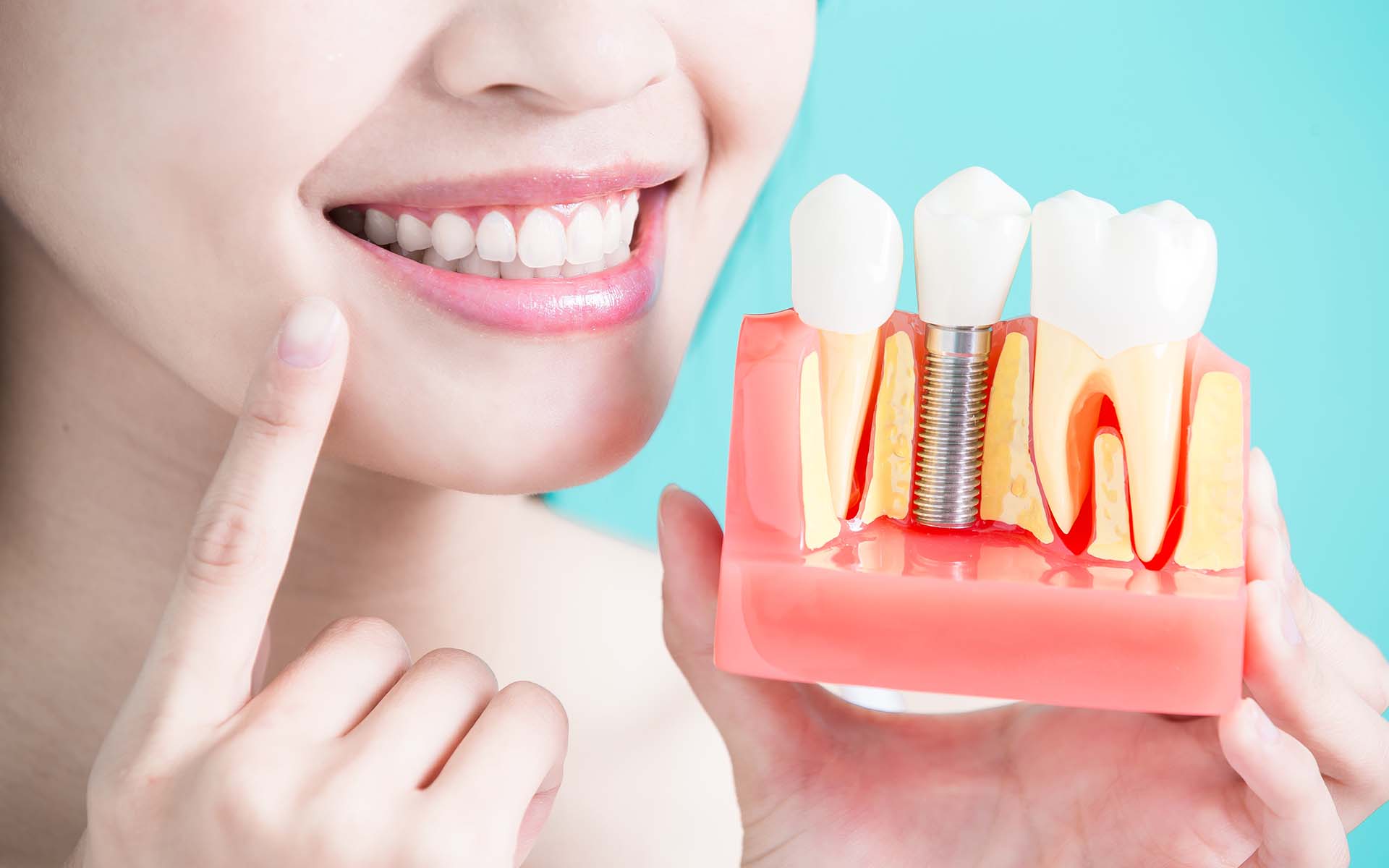
Implant Treatment

Implant; can be defined as an artificial tooth root. Its raw material is titanium and is in the form of a screw. It is placed in the jawbone and made to support dental prostheses. Removable or fixed prostheses made to replace missing teeth are held on these roots. Thanks to the treatment applied, the patient can fulfill the chewing function for life and gains an aesthetically pleasing appearance. Dental implants are comfortable, robust and reliable. Prosthetic teeth placed on dental implants, on the other hand, help to have a healthier appearance by replacing missing teeth. This treatment can be applied to every individual whose bone development is completed. The completion time of development is usually 16-17 years for girls, while it can reach 18 years for boys. There is no age limit for implant treatment in adult patients.
How is Implant applied?
For treatment, first of all, dentist control and approval is required. If the patient is found suitable for treatment as a result of the controls, the process begins. If necessary, x-rays of the teeth are taken. The type of implant to be used is decided and their length is determined. The most important thing here is to correctly decide on the implant to be applied and the prosthesis to be placed on it. While the implant is placed in place of the tooth roots, general or local anesthesia is applied so that the patient does not feel pain and pain. Although the duration of the procedure varies depending on the number of implants, it can take between 30 minutes and 1 and a half hours.
After the lower part of the implant is placed, it is expected to integrate with the bone and this happens in 3-6 months. At the integration stage, the dentist can make a temporary prosthesis when necessary. During the 3- to 6-month union period, the patient can be called for a check-up by the dentist and may request an X-ray again if necessary. At this stage, patients can continue their eating and drinking patterns without putting too much pressure on the teeth. After the lower part of the implant is placed on the jawbone and the part is surrounded by a healthy bone, the upper part is placed. After the measurement of this superstructure is taken, the construction and assembly of the prostheses begins. Placing the prostheses on the implants is completed in a few sessions. These prosthetic teeth placed on the implant have a natural appearance.
Things to Consider Before Getting a Dental Implant
Before starting the treatment, the dentist should examine the jaw structure correctly with various tests. It is important that the jawbone in the area to be treated has the width and height to accept the implant screw. In addition to the proper jawbone health, the gums should also be completely healthy during the treatment. Clinical and radiological examination should be performed by the dentist, and the patient's bone quality should be checked for compliance with the treatment. The success rate will decrease in patients who do not have the appropriate bone tissue for treatment. Smoking increases the risk of infection, especially during the early recovery period of implant treatment, so it is recommended not to smoke during this period. Some health conditions prevent dental implant application.
- Various heart conditions
- Blood clotting problems
- Rheumatic diseases
- Uncontrolled diabetes mellitus
- Anatomically unsuitable bone structure in the jaw
The important point here is that with the education and experience of the dentist, she learns about the health problems of the patient in advance and makes sure that she performs the necessary examinations.
Considerations After Dental Implant Treatment
After the treatment, everyone expects the implants to have a long life. Implant life depends on multiple factors. The most important factor is the importance that the patient gives to oral and dental hygiene. Implants can be used for a lifetime as long as the necessary daily maintenance is done. Brushing your teeth regularly twice a day, rinsing your mouth every day, and flossing at least once a day will prolong the life of the implants. It is important not to interrupt the dentist checks both for your general oral and dental health and for the fate of your implants.